Hello everyone, I’m excited to share some insights with you. As a manager at Fairwill Display, I often get asked, “What can I use in place of glass?” This is a common question, especially for those looking for alternatives that are both cost-effective and durable.
Acrylic, Polycarbonate, PETG, Tempered Glass, Laminated Glass, Plexiglass are widely used in place of glass.
Glass is a popular material for showcases, often chosen for its transparency and sleek appearance. It provides an unobstructed view of the displayed items, enhancing their visibility and appeal. However, glass also comes with several significant drawbacks that can make it less than ideal for some applications. One of the primary issues with glass is its weight. Glass is heavy, which can make installation and transportation more challenging and costly. This weight can also require more robust and expensive supporting structures to ensure safety and stability.
In addition to its weight, glass is fragile. It is prone to breaking or shattering upon impact, which poses a safety risk and can lead to costly replacements. The fragility of glass makes it less suitable for environments where people frequently handle it or where it might be exposed to potential impacts. Moreover, glass can be expensive, particularly high-quality, tempered, or laminated varieties. These costs can add up, especially for large projects or for businesses that need to outfit multiple locations. Given these drawbacks, it’s worth exploring other materials that can offer similar benefits without the downsides.
Today, I’ll explore various alternatives to glass that you can consider for your showcases. These alternatives include materials like acrylic, polycarbonate, PETG, and plexiglass, each of which has its own unique set of advantages. Acrylic, for example, is much lighter than glass and offers excellent optical clarity. It’s also more impact-resistant, which reduces the risk of breakage. Polycarbonate is another fantastic option; it is even more durable than acrylic. People often use it in applications requiring high impact resistance, such as bulletproof windows. PETG is a versatile and flexible material that is also highly durable. It is resistant to chemicals, making it suitable for a wide range of uses. Plexiglass, a type of acrylic, offers UV resistance and clarity. These features make it an excellent choice for displays. It is especially suitable for those exposed to sunlight.
Let’s dive in and find out what can I use in place of glass. Each of these materials offers a combination of durability, clarity, and cost-effectiveness that makes them ideal for use in showcases. By considering these alternatives, you can create beautiful, functional displays that meet your needs without the limitations of traditional glass. Whether you’re looking for a material that is lightweight, shatter-resistant, or cost-effective, there’s an option that will work for you. So, let’s explore these alternatives in more detail and find the perfect solution for your display needs.
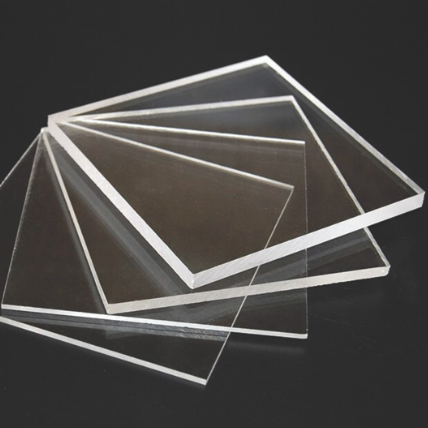
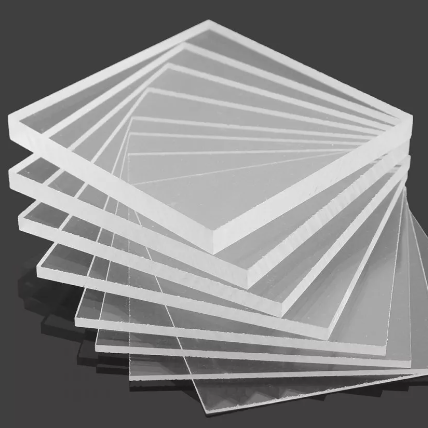
Acrylic is one of the most popular alternatives to glass, and for good reason. Its combination of features makes it a versatile and practical choice for many applications. It is particularly useful in the realm of display cases. Store fixtures also benefit greatly from its use. One of the standout features of acrylic is its lightweight nature. Unlike glass, which can be cumbersome and difficult to handle, acrylic is much easier to transport and install.
In addition to being lightweight, acrylic is also highly shatter-resistant. This means that in the event of an impact, acrylic is far less likely to break than glass. Even if it does break, acrylic tends to fracture into large, blunt pieces. This greatly reduces the risk of injury. It doesn’t shatter into sharp shards. This characteristic makes acrylic particularly appealing for environments where safety is a paramount concern. It is especially suitable for retail stores, museums, and other public spaces. These settings benefit from its safety features. The durability of acrylic ensures that displays remain intact and safe, even in high-traffic areas.
Acrylic also offers excellent optical clarity, often rivaling that of glass. This means that items displayed behind acrylic panels are easily visible, with minimal distortion. The high clarity of acrylic enhances the aesthetic appeal of displays, making products look their best. This is especially important in retail environments where the presentation of products can directly impact sales. You can treat acrylic with coatings. This treatment makes the acrylic more durable.
Another significant advantage of acrylic is its ease of customization. You can cut, drill, and shape acrylic sheets into a wide variety of forms, allowing for highly customized displays. This flexibility makes acrylic an ideal choice for businesses that need unique or specialized display solutions. Whether you need a simple, straightforward case or a complex, multi-faceted display, acrylic is versatile. You can adapt it to meet your specific requirements. This level of customization is often not possible with glass, which can be more difficult and expensive to shape and modify.
Furthermore, acrylic is often more cost-effective than glass. Not only is the material itself generally cheaper, but the reduced weight also lowers transportation and handling costs. Since acrylic is less prone to breaking, you can save money in the long run. Its durability leads to fewer instances of breakage. Consequently, you will need fewer replacements. For businesses operating on tight budgets or those looking to maximize their investment, acrylic offers a practical and economical solution.
When considering the question, “What can I use in place of glass?” acrylic consistently stands out as a top choice. Its combination of lightweight, shatter resistance, clarity, and cost-effectiveness makes it a superior alternative to glass in many scenarios. Particularly for store fixtures and displays, acrylic provides a safe, attractive, and budget-friendly option that doesn’t compromise on quality.
In conclusion, acrylic’s versatility and practicality make it a highly desirable material for a wide range of applications. You can easily customize it, and its durability makes it a top choice. The safety benefits further enhance its appeal. These factors position it as a leading option for those looking to replace glass. Whether you are setting up new store fixtures or creating custom displays, acrylic offers a comprehensive solution. It is also ideal if you are looking for a more cost-effective material. Acrylic meets a variety of needs. Its versatility and affordability make it an excellent choice. This material provides a practical solution for many applications. So, the next time you find yourself asking, “What can I use in place of glass?” consider acrylic. It is a smart and reliable alternative. Acrylic offers numerous benefits over glass.
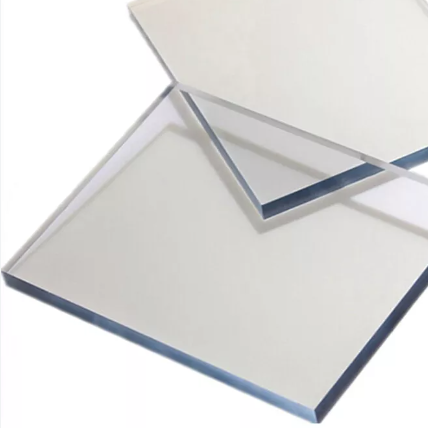
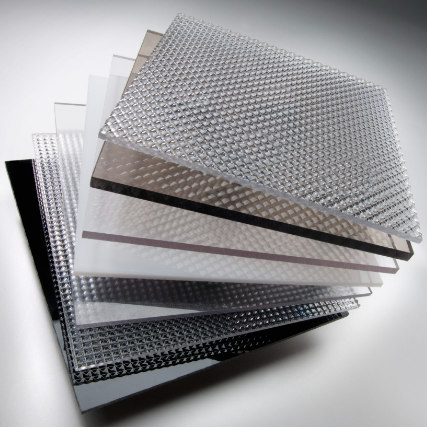
Polycarbonate is another excellent alternative to glass, renowned for its exceptional durability and versatility. Its impact resistance is one of its most significant advantages, surpassing even that of acrylic. This remarkable toughness makes polycarbonate one of the most resilient materials available. It is capable of withstanding substantial force. It does so without cracking or breaking. Polycarbonate’s impressive durability leads people to use it in the production of bulletproof windows. They also use it in riot shields. This highlights its unparalleled strength. If you are pondering the question, “What can I use in place of glass?” polycarbonate undoubtedly deserves consideration.
The robustness of polycarbonate makes it ideal for environments where safety is a paramount concern. In settings such as retail stores, schools, hospitals, and public buildings, the risk of breakage is a significant factor. Polycarbonate mitigates this risk, providing a safe and reliable alternative to glass. Its shatter-resistant nature means that even under considerable stress, polycarbonate will not fracture into sharp, dangerous shards. This feature significantly reduces the risk of injury. Polycarbonate remains intact under pressure. It provides a safer alternative in many applications. Its durability and safety make it highly desirable. This safety aspect is particularly crucial in areas where children frequent or where people display heavy items.
In addition to its impressive strength, polycarbonate offers excellent optical clarity. It allows more light to pass through than glass, which enhances the visibility and attractiveness of displayed items. This superior light transmission makes polycarbonate an excellent choice for showcases, display cases, and signage. Polycarbonate panels make products and exhibits appear brighter. They also look more appealing. This can be a significant advantage in retail environments. The visual impact can influence purchasing decisions.
Polycarbonate is also lightweight, making it easier to handle, transport, and install compared to glass. This lightweight nature can significantly reduce labor costs and installation time, particularly in large-scale projects. You can handle polycarbonate easily, which means you can use it in a wide variety of applications. It does not require heavy-duty support structures. This flexibility can be particularly beneficial for businesses looking to create dynamic and flexible display solutions.
Another notable advantage of polycarbonate is its resistance to temperature extremes and UV radiation. Unlike some other materials, polycarbonate does not become brittle in cold weather. It also does not soften in high heat. This makes it suitable for both indoor and outdoor use. Its UV resistance means that it will not yellow or degrade when exposed to sunlight. This helps maintain its clarity over time. It also preserves its appearance. This durability ensures that polycarbonate installations remain attractive and functional for many years, providing excellent value for money.
Furthermore, you can easily fabricate and mold polycarbonate into a variety of shapes and sizes. This adaptability allows for highly customized applications, from simple panels and sheets to complex, three-dimensional structures. You can cut, drill, and bend the material without losing its structural integrity. This makes it an ideal choice for bespoke projects. Its versatility allows for customized designs. Whether you need standard display panels or unique, intricate designs, you can tailor polycarbonate to meet your specific requirements.
Cost is another factor where polycarbonate can offer significant benefits. While the initial material cost of polycarbonate may be higher than that of glass, its long-term durability is superior. Additionally, its low maintenance requirements often make it more cost-effective over time. This results in savings despite the higher upfront cost. The reduced risk of breakage and the associated costs of replacement and repairs can lead to substantial savings. Additionally, the energy savings from its excellent thermal insulation properties can further enhance its cost-effectiveness.
In conclusion, polycarbonate is a superior material that offers a combination of strength, clarity, and versatility unmatched by traditional glass. Its impact resistance and lightweight nature make it an ideal choice for a wide range of applications. Additionally, its excellent optical properties enhance its appeal. Its durability further solidifies its suitability for various uses. Whether you are designing display cases or protective barriers, polycarbonate is an excellent choice. You can also use it in any structure where glass would traditionally be used. Polycarbonate provides a safer solution. It is more durable than glass. Often, it is also more cost-effective. So, when you find yourself asking, “What can I use in place of glass?” consider the many advantages of polycarbonate. It is a material that not only meets but often exceeds the demands of modern applications. It provides peace of mind. It also offers exceptional performance.
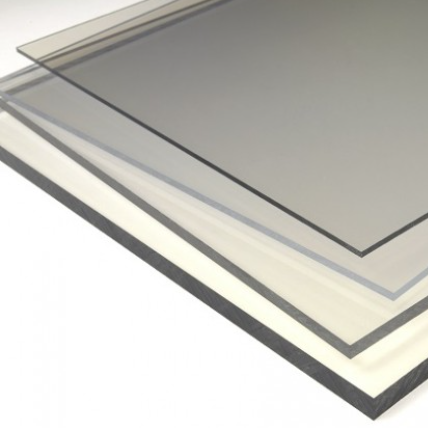
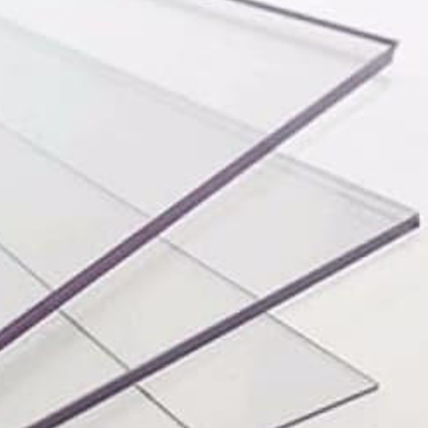
PETG, or polyethylene terephthalate glycol, is another great material to use instead of glass. It’s a type of plastic that offers clarity, durability, and ease of use. These qualities make PETG an excellent choice for a variety of applications, particularly in settings where traditional glass might fall short. One of the standout features of PETG is its transparency. Like glass, PETG offers excellent optical clarity, ensuring that items displayed behind it are clearly visible. This makes it ideal for showcases, display cases, and signage where visibility is crucial.
One of the primary advantages of PETG is its durability. It is a robust material that can withstand significant wear and tear without breaking or becoming damaged. This durability makes PETG suitable for environments where people frequently handle displays or where there is a risk of impact. For instance, in retail stores, museums, and public spaces, the longevity of PETG can save time and money on repairs and replacements. Its impact resistance ensures that it can endure bumps and knocks that would shatter or crack glass.
Another important aspect of PETG is its food-safe nature. Unlike some plastics, PETG does not contain harmful chemicals that could leach into food products. This property makes it an excellent choice for use in food displays and packaging. In food stores and supermarkets, you can use PETG to create clear, hygienic barriers. These barriers protect food from contamination. They also allow customers to see the products clearly. This application extends to restaurants and food service environments where hygiene and safety are paramount.
When considering alternatives to glass, flexibility is another factor where PETG shines. It is more flexible than both acrylic and polycarbonate, making it less likely to crack under stress. This flexibility is particularly beneficial in applications where you might bend or shape the material. For instance, in custom display cases or intricate designs, you can mold and form PETG without compromising its integrity. This versatility allows for greater creativity and innovation in design.
PETG is also highly resistant to chemicals. This chemical resistance makes it suitable for use in various environments. It can withstand exposure to cleaning agents, solvents, and other harsh substances. This durability ensures it remains effective in demanding conditions. In laboratory settings, PETG withstands rigorous cleaning without degrading. It also performs well in industrial applications. Additionally, it maintains its clarity in retail environments where cleanliness is essential. This durability makes PETG a reliable choice. It is suitable across various sectors. This resistance extends the lifespan of the material and ensures that it remains visually appealing and functional over time.
Another notable advantage of PETG is its ease of fabrication. You can easily cut, drill, and form it using standard tools, making it accessible for a wide range of applications. Whether you are creating large display panels or intricate signage, you can manipulate PETG to meet your needs. It does not require specialized equipment. This makes it a versatile and convenient material to work with. This ease of fabrication reduces costs and speeds up production times, making it an efficient choice for businesses.
In terms of cost, PETG is often more affordable than glass and other high-performance plastics. Its lower price point, combined with its durability and ease of use, makes it a cost-effective solution for many applications. Businesses looking to reduce expenses without sacrificing quality will find PETG to be an attractive option. The savings on initial material costs, coupled with the reduced need for replacements and repairs, make PETG a smart financial choice.
Furthermore, PETG is environmentally friendly compared to some other plastics. You can recycle it, which means that at the end of its life cycle, you can repurpose it rather than sending it to a landfill. This recyclability is increasingly important as businesses and consumers alike prioritize sustainability and environmental responsibility. Choosing PETG can help reduce the environmental impact of your projects and align with green initiatives.
In conclusion, PETG, or polyethylene terephthalate glycol, is a versatile and reliable material that offers numerous advantages over traditional glass. Its clarity, durability, flexibility, and chemical resistance make it an excellent choice for a wide range of applications. Whether you need a material for food displays, store fixtures, or custom designs, PETG provides a practical and cost-effective solution. So, if you’re asking, “What can I use in place of glass?” PETG is certainly worth considering. Its combination of performance, affordability, and environmental benefits makes it a standout choice in today’s market.
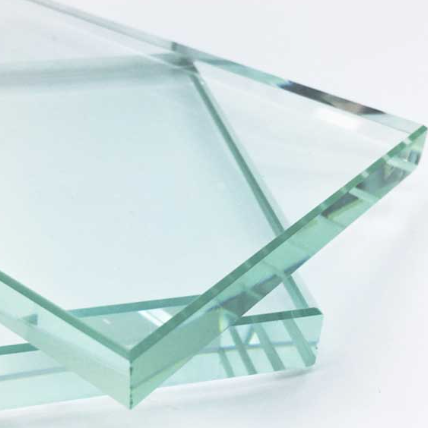

While not a complete replacement for regular glass, tempered glass is definitely worth mentioning due to its enhanced properties. Tempered glass is significantly stronger and safer than standard glass, making it an attractive option for many applications. The heat-treatment process increases its durability and resistance to impact, achieving this strength. If tempered glass does break, it shatters into small, blunt pieces rather than sharp, jagged shards. This characteristic greatly reduces the risk of injury, making tempered glass a safer alternative for various settings.
Tempered glass undergoes a special thermal process where it is heated to around 620 degrees Celsius and then rapidly cooled. This process, known as tempering, alters the internal structure of the glass, increasing its strength by up to four times compared to regular glass. The result is a glass that can withstand significant impacts and stresses without breaking. If you’re wondering, “What can I use in place of glass?” tempered glass offers an excellent solution with its enhanced safety features and robustness.
The safety benefits of tempered glass make it an ideal choice for high-traffic areas. It is especially suitable for environments where safety is a primary concern. For example, in public buildings, tempered glass can prevent accidents and injuries associated with glass breakage. It is also beneficial in retail stores. Additionally, office spaces can greatly benefit from using tempered glass. Its ability to shatter into small, blunt pieces instead of sharp shards minimizes the potential for cuts and lacerations. This feature offers peace of mind in places frequented by children. It is also beneficial in areas with large numbers of people. The safety provided by tempered glass is invaluable in such environments.
People often use tempered glass in high-end displays and architectural applications due to its superior strength and safety features. You commonly find this type of glass in storefront windows, glass doors, and building facades. They use it where both aesthetics and safety are crucial. The clarity and sleek appearance of tempered glass make it a popular choice for modern architectural designs and retail displays. Its ability to withstand impacts and stresses without compromising on visual appeal is a significant advantage.
While tempered glass is more expensive than regular glass, it offers significant benefits. These benefits include enhanced safety and durability. This justifies the additional cost. Investing in tempered glass can result in long-term savings by reducing the need for frequent replacements and repairs. Its durability ensures that it remains intact and functional for extended periods. This longevity makes it a cost-effective option. Over time, the benefits outweigh the initial investment.
In addition to its strength and safety, tempered glass also offers excellent thermal resistance. It can withstand high temperatures without losing its structural integrity. This makes it suitable for environments with significant temperature fluctuations. This property is beneficial in kitchen applications. Examples include oven doors and stovetops. In these settings, high heat exposes the glass. The thermal resistance of tempered glass is also useful in exterior applications. You can expose it to direct sunlight. It can also handle varying weather conditions.
Another advantage of tempered glass is its versatility. You can use it in a wide range of applications beyond traditional windows and doors. For instance, people commonly use it in shower enclosures, tabletops, and glass railings. The strength of tempered glass makes it ideal for many applications. It is perfect for areas where the risk of breakage is high. The glass minimizes the risk of injury. This combination makes it a top choice for safety. You can use tempered glass creatively in both residential and commercial settings due to its versatility.
Tempered glass also provides excellent optical clarity, similar to regular glass. This ensures that it does not compromise the visibility of displayed items or the overall aesthetic of a space. The ability of tempered glass to combine safety, strength, and aesthetic appeal makes it a highly desirable material.
In conclusion, tempered glass may not completely replace regular glass in all applications. However, it offers significant advantages. These benefits make it worth considering. Its enhanced strength, safety features, thermal resistance, and versatility make it a superior alternative for various settings. Whether used in high-end displays, architectural applications, or everyday household items, tempered glass provides peace of mind and durability. So, if you’re asking, “What can I use in place of glass?” Tempered glass is a strong option.
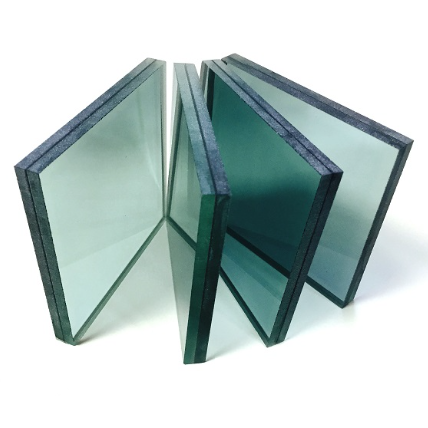
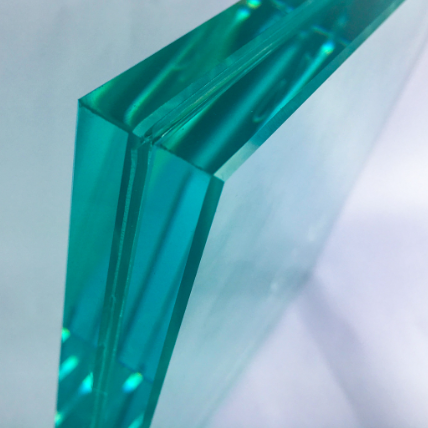
Laminated glass is another excellent alternative to traditional glass, offering enhanced safety and durability. It is constructed by bonding two or more layers of glass with a plastic interlayer, typically made of polyvinyl butyral (PVB) or ethylene-vinyl acetate (EVA). This multi-layered construction significantly increases the strength and safety of the glass compared to regular, single-pane glass. If you’re asking, “What can I use in place of glass?” laminated glass could be the ideal solution.
One of the primary benefits of laminated glass is its safety feature. The plastic interlayer holds the glass shards together in the event of a breakage. Instead of shattering into dangerous, sharp pieces, the glass remains largely intact, reducing the risk of injury. This characteristic is important in environments where safety is a concern. Examples include schools, public buildings, and busy retail stores. Laminated glass maintains its integrity even when damaged. This ensures it is secure and reliable. It is a great option for various applications.
In addition to its safety benefits, laminated glass offers excellent soundproofing qualities. The plastic interlayer dampens sound vibrations, making it an effective barrier against noise. This soundproofing capability is particularly beneficial in busy store environments, offices, and residential buildings located in noisy areas. By reducing the amount of sound that passes through, laminated glass helps create a quieter environment. This makes it more comfortable for customers. It also benefits employees. The noise reduction enhances overall comfort. This makes laminated glass a valuable choice.
Laminated glass also provides other practical benefits. It offers UV protection, blocking up to 99% of harmful UV rays. This helps protect displayed items from fading. The UV protection is highly effective. This makes it ideal for preserving items. Furthermore, its durability and resistance to impact make it a long-lasting choice that requires less frequent replacement than traditional glass. Laminated glass is also available in various thicknesses and can be customized to meet specific safety and aesthetic requirements.
In conclusion, laminated glass is a superior alternative to traditional glass, offering enhanced safety, soundproofing, and durability. Its construction ensures that it remains intact even when broken, significantly reducing the risk of injury. Its soundproofing qualities make it ideal for busy environments. It also offers UV protection. Customization options add to its appeal. Laminated glass is versatile and reliable. It is a secure and practical solution. It is suitable for a wide range of applications. Consider laminated glass as an alternative to regular glass.
Plexiglass, a well-known brand name for acrylic, deserves special mention due to its outstanding properties. It is widely used in various display applications because of its exceptional clarity and durability. Plexiglass offers superior optical clarity, often making it difficult to distinguish from glass at first glance. However, it comes with several advantages that make it a more practical choice in many situations. If you’re still wondering, “What can I use in place of glass?” plexiglass is a fantastic option.
One of the significant benefits of plexiglass is its lightweight nature. It is much lighter than traditional glass, making it easier to handle, transport, and install. This lightweight property also reduces the strain on supporting structures, allowing for more versatile and creative display designs. Additionally, plexiglass is stronger than glass.
Plexiglass is also UV resistant, which means it won’t yellow or degrade over time when exposed to sunlight. This resistance to UV radiation is crucial for displays exposed to natural light. It ensures they remain clear and visually appealing for longer periods. Whether used in outdoor signage or indoor displays near windows, plexiglass maintains its pristine condition. It preserves the aesthetic integrity of the display. This makes plexiglass a durable and reliable choice.
Moreover, plexiglass is easy to clean and maintain. Unlike glass, which can accumulate smudges and fingerprints, you can clean plexiglass with simple solutions. It requires minimal effort to keep it looking its best. This low-maintenance characteristic makes it an ideal choice for busy store environments where cleanliness and appearance are paramount.
Plexiglass also offers excellent versatility. You can cut, drill, and shape plexiglass into various forms. This makes it suitable for custom display solutions. Whether you need straightforward display panels or intricate designs, you can adapt plexiglass to meet your specific needs. Its versatility extends to a range of applications beyond displays, including protective barriers, skylights, and more.
In conclusion, plexiglass stands out as a superior alternative to traditional glass for displays and many other applications. Its combination of clarity and durability makes it a practical choice. The lightweight nature adds to its appeal. UV resistance and ease of maintenance are key benefits. Plexiglass is both practical and attractive. If you’re considering what to use in place of glass, choose plexiglass. It offers a reliable and long-lasting solution. It meets both functional and aesthetic requirements.
Conclusion
There are several excellent alternatives to glass for your showcases. Whether you choose acrylic, polycarbonate, PETG, tempered glass, laminated glass, or plexiglass, each material has its unique benefits. When you’re thinking, “What can I use in place of glass?” consider your specific needs and choose the material that best suits your requirements.
At Fairwill Display, we understand the importance of choosing the right material for your displays. We offer a range of products that cater to different needs and preferences. Our goal is to provide you with high-quality, cost-effective solutions that enhance your store’s appearance and functionality.
I hope this article has helped you find the answer to “What can I use in place of glass?” If you have any questions or need further assistance, please feel free to reach out to us. We’re here to help you make the best choice for your business.
